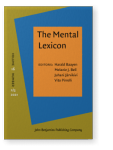Vol. 16:2/3 (2021) ► pp.271–324
Verbal reaction times based on tracking lip movement
Valid and reliable measurements of response latency are crucial in testing empirical predictions across fields of psychology. In research utilizing verbal responses, acoustic latency is the typical measure of response latency, but its validity has been questioned. We describe a simple and affordable alternative – articulatory latency based on tracking lip position. Using this method, we measured the acoustic and articulatory latencies of syllables beginning with various simple and complex onsets and ending with “uh” using the speeded naming task, where participants were instructed to have their mouths either closed or open before articulating. The initial oral configuration, place of articulation, and voicing all had significant effects on this measure of articulatory latency across segments, factors that researchers must consider in designing experiments and selecting stimuli.
Article outline
- Response time vs. reaction time
- Possible measures of reaction time
- Lip separations in the formation of the oral constriction
- Instrument resolution, power, and the test of ESD
- Specific goals
- Method
- Participants
- Stimuli
- Apparatus
- Procedure
- Data preparation and analyses
- Results
- Stage 1: Error analysis
- Stage 2: Overview of the current mixed model approach
- Random effect structures
- Parallel to previous research
- Stage 3: F-test of the equality of standard deviations
- Stage 4: Overall analysis
- I.Manner and place of articulation
- a.Manner of Articulation
- b.Place of Articulation
- II.Onset complexity
- a.Manner of Articulation & Onset complexity
- b.Place of Articulation & Onset complexity
- III.Simple onsets
- a.Manner of Articulation & Voicing
- b.Place of Articulation & Voicing
- I.Manner and place of articulation
- Stage 5. Most sensitive measures
- I.Overall analysis
- II.Onset complexity
- a.Manner of Articulation & Onset complexity
- b.Place of Articulation & Onset complexity
- III.Simple onsets
- a.Manner & Voicing
- b.Place & Voicing
- Discussion
- Demonstrations of effective acuity
- The effect of initial mouth position
- Manner effect dissociation
- Voicing
- Onset complexity
- Conclusion
- Notes
-
References
